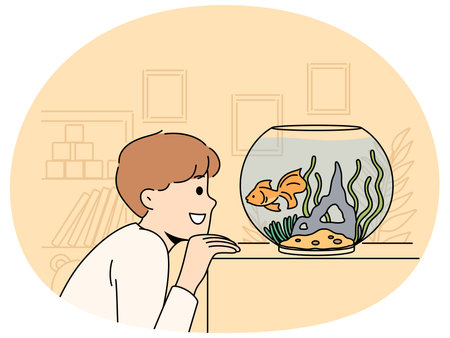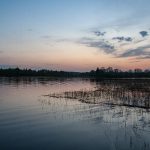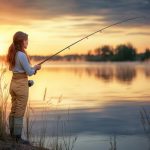1. Choosing the Right Location
Picking the right fishing spot is one of the most important steps for a successful first fishing trip. As a beginner, you’ll want to choose a location that’s easy to access, safe, and has a good chance of catching fish without needing advanced gear or techniques. Here are some tips to help you find the perfect beginner-friendly fishing location:
Start Local
You don’t need to travel far to enjoy your first fishing experience. Many communities in the U.S. have public ponds, small lakes, rivers, and fishing piers that are ideal for beginners. Check with your local parks and recreation department or state wildlife agency — they often provide maps and guides showing nearby fishing spots.
Know What You Can Catch
The type of fish available can vary depending on where you go. Some areas are stocked with easy-to-catch species that are perfect for new anglers. Heres a quick guide to what you might expect in different locations:
| Location Type | Common Fish Species | Why It’s Good for Beginners |
|---|---|---|
| Pond | Bluegill, Sunfish, Catfish | Calm waters, easy access, lots of bites |
| Lake | Bass, Crappie, Trout | Larger area with more variety of fish |
| Pier (Saltwater) | Mackerel, Flounder, Sea Trout | No boat needed, great for learning saltwater basics |
Check Access and Rules
Before heading out, make sure the spot you’ve chosen is open to the public and doesn’t require special permits beyond a standard fishing license. Some locations may have catch limits or specific rules about bait and tackle — these are usually posted near the water or available online through your state’s fish and wildlife website.
Tip:
If you’re not sure where to go, ask at a local bait shop — they’re often happy to recommend good starter spots based on current conditions and whats biting.
2. Getting Your Fishing License and Understanding Regulations
If youre getting ready for your first fishing trip, one of the most important steps is making sure youre fishing legally. That means getting a valid fishing license and understanding the local rules that apply to where and what you can fish.
Why You Need a Fishing License
A fishing license helps support wildlife conservation and ensures our natural resources are protected for future generations. In the U.S., most states require a license whether youre fishing in freshwater or saltwater, even if its just for fun.
How to Get Your Fishing License
The process for getting a fishing license varies by state, but it’s usually quick and easy. You can often purchase one online, at a sporting goods store, or through your state’s fish and wildlife department. Here’s a simple breakdown:
| State | Where to Buy | License Type | Website |
|---|---|---|---|
| California | Online, Sporting Goods Stores | Freshwater, Ocean, One-Day, Annual | CA Fish & Wildlife |
| Texas | Online, Walmart, Outdoor Retailers | Freshwater, Saltwater, All-Water Packages | Texas Parks & Wildlife |
| Florida | Online, Tax Collector Offices | Freshwater, Saltwater, Combo Licenses | MyFWC.com |
Understanding Local Fishing Regulations
Laws about fishing can vary widely depending on where you are. These rules are designed to protect fish populations and make sure everyone has a fair shot at catching something. Some common regulations include:
- Certain species restrictions: Some fish may be off-limits during spawning seasons.
- Catch limits: There may be a maximum number of fish you’re allowed to keep per day.
- Size limits: Fish must meet minimum (or maximum) size requirements to be kept.
- Bait and tackle rules: Some areas only allow artificial lures or barbless hooks.
- No-fishing zones: Certain lakes or rivers may be protected or restricted.
Tips to Stay Legal While Fishing
- Check regulations before every trip: Rules can change seasonally or based on environmental conditions.
- Cary your license with you: Whether its digital or paper, always have proof of your license on hand.
- If unsure, ask a local expert: Bait shops and park rangers are great sources of up-to-date info.
Your Responsibility as an Angler
The best anglers respect nature and follow the rules. By getting licensed and learning the local laws, you help protect fish habitats and ensure that the sport stays enjoyable for everyone. It’s all part of being a responsible fisherman!

3. Picking the Right Gear and Tackle
When youre getting ready for your first fishing trip, choosing the right gear can feel a little overwhelming. But don’t worry—starting with the basics will help you feel confident and ready to cast your line. The type of gear you need depends on where you’re fishing (like a lake, river, or ocean) and what kind of fish you’re trying to catch. Let’s break it down step by step.
Essential Fishing Gear for Beginners
Here are the must-have items every beginner angler should bring along:
| Item | Description | Beginner Tip |
|---|---|---|
| Rod and Reel | A spinning rod and reel combo is great for most beginners because its easy to use and versatile. | Look for a medium-action spinning combo labeled “ready to fish.” |
| Fishing Line | Monofilament line is forgiving and easy to manage, perfect for new anglers. | Start with 6–12 lb test line depending on your target fish size. |
| Hooks | Use assorted sizes to match different bait types and fish species. | Size 6 to 10 hooks work well for panfish and other small freshwater fish. |
| Bait | You can use live bait like worms or minnows, or artificial lures like soft plastics and spinners. | Live bait is often more effective for beginners learning how fish bite. |
| Tackle Box | Keeps all your gear organized—includes compartments for hooks, sinkers, lures, etc. | A small plastic tackle box is enough for short trips. |
| Bobbers/Floats | Helps keep your bait at the right depth and shows when a fish bites. | Choose round plastic bobbers—they’re easy to attach and see on the water. |
| Sinkers/Weights | Add weight to help your bait sink in the water. | Start with split-shot sinkers—theyre small and simple to use. |
Selecting Gear Based on Location & Target Fish
Lakes & Ponds (Freshwater)
If youre heading to a local lake or pond, chances are youll be fishing for bass, bluegill, or crappie. A lightweight spinning rod with live worms or soft plastic lures will work just fine here.
Rivers & Streams (Freshwater)
Casting into moving water? You’ll want slightly heavier gear if youre targeting trout or catfish. Use natural baits like nightcrawlers or salmon eggs, paired with small inline spinners or jigs.
Ocean & Saltwater Shores (Saltwater)
If your first trip is by the coast, saltwater fishing requires stronger rods and corrosion-resistant reels. Shrimp, squid, or cut bait works well from piers or beaches. Be sure your gear is rated for saltwater use.
A Few Extra Items You Might Need
- Pliers: For removing hooks safely from the fishs mouth.
- Towel or rag: To clean your hands after handling bait or fish.
- Measuring tape: Helps check if your catch meets local legal size limits.
- Tackle license: In most U.S. states, you need a fishing license—even for beginners. Check local regulations before you go!
The right gear doesn’t have to be expensive or complicated. Start simple, stick with proven basics, and as you gain experience, you’ll figure out what works best for you based on where you fish and what you enjoy catching!
4. What to Wear and Bring Along
When youre heading out on your first fishing trip, wearing the right clothes and packing the right gear can make all the difference. Comfort, protection from the elements, and being prepared for unexpected situations are key. Heres how to dress smart and what essentials to bring with you.
Dress for the Weather and Terrain
The weather can change quickly, especially near water, so its important to dress in layers. Choose lightweight, moisture-wicking clothes that keep you cool when its hot and warm when it gets chilly. Always check the forecast before you go.
Recommended Clothing:
| Item | Why Its Important |
|---|---|
| Lightweight Long-Sleeve Shirt | Protects from sunburn and bugs |
| Quick-Dry Pants or Shorts | Keeps you comfortable if you get splashed or rained on |
| Waterproof Jacket | Essential if theres a chance of rain or wind |
| Wide-Brim Hat or Baseball Cap | Shields your face from the sun |
| Sunglasses (Polarized) | Cuts glare on the water and protects your eyes |
| Sturdy Shoes or Water-Resistant Boots | Gives good traction and keeps your feet dry |
What to Pack: Fishing Trip Essentials
A successful fishing trip isn’t just about rods and reels—you’ll need some basic supplies to stay safe and comfortable throughout the day. Heres a checklist of must-haves:
Essential Gear Checklist:
- Sunscreen (SPF 30 or higher): Protects your skin from harmful UV rays.
- Bottled Water: Staying hydrated is crucial, especially on warm days.
- Snacks or a Packed Lunch: Keep your energy up with easy-to-carry foods like granola bars, trail mix, or sandwiches.
- First-Aid Kit: Include band-aids, antiseptic wipes, tweezers, and pain relievers for minor cuts or scrapes.
- Tackle Box: Holds your hooks, lures, sinkers, and other fishing gear.
- Fishing License (if required): Make sure youre following local regulations.
- Ziploc Bags or Cooler: Great for storing bait or keeping your catch fresh.
- Bug Spray: Keeps mosquitoes and ticks at bay—especially in wooded or marshy areas.
- Pocket Knife or Multi-tool: Handy for cutting line or dealing with knots.
- Towel or Rag: Useful for wiping hands after handling fish or bait.
Packing smart ensures you’re ready for whatever the day brings. Whether youre on a boat, at a lake, or along a riverbank, being prepared helps you focus on what matters most—enjoying the experience and catching some fish!
5. Basic Fishing Techniques and Etiquette
Before you head out on your first fishing trip, it’s important to learn a few simple fishing techniques and understand the basic etiquette that helps everyone enjoy their time outdoors.
Simple Fishing Techniques for Beginners
Don’t worry—you don’t need to master complicated skills right away. Start with the basics:
| Technique | Description |
|---|---|
| Casting | This is how you throw your line into the water. Hold your rod firmly, release the line at the right moment, and aim for a quiet splash to avoid scaring the fish. |
| Reeling In | Once you feel a tug or see your bobber move, slowly start turning the reel handle. Keep tension on the line so the fish doesn’t escape. |
| Setting the Hook | When you think a fish has bitten, quickly but gently jerk the rod upward to set the hook in its mouth. |
Fishing Etiquette: Be a Respectful Angler
Fishing isnt just about catching fish—its also about enjoying nature and sharing space with others. Here are some unwritten rules to follow:
Respect Others’ Space
If someone is already fishing in an area, give them plenty of room. Crowding other anglers can scare away fish and ruin their experience.
Keep Noise Down
Loud talking or music can disturb wildlife and other people nearby. Try to keep things calm and peaceful.
Clean Up After Yourself
Always take your trash with you, including fishing lines, bait containers, and food wrappers. Leaving no trace helps preserve fishing spots for everyone.
Follow Local Rules and Regulations
Make sure you have a valid fishing license and know the local laws about catch limits, bait restrictions, and protected species. These rules help protect fish populations for future generations.
Quick Tip:
If youre unsure about something, dont hesitate to ask a fellow angler or look up local guidelines online before heading out.
Learning these basic techniques and being respectful while fishing will help you feel confident and make your first trip more enjoyable—not only for you but for everyone else around you too.


